
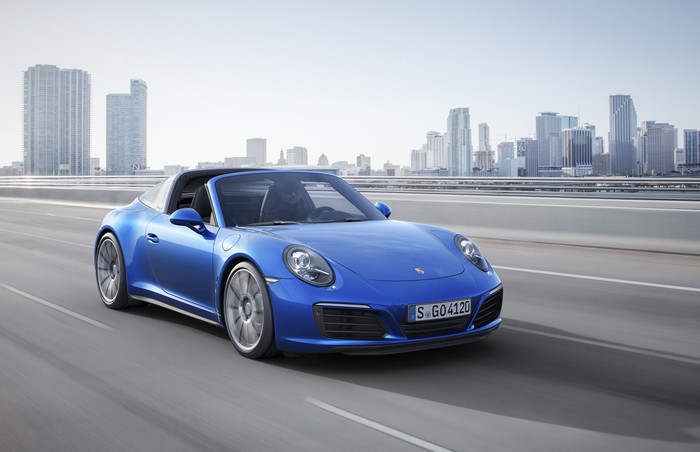
2018 Porsche 911 Targa
The Targa has returned to Porsche's 911 lineup. As before, this all-wheel-drive model's hallmark is a removable roof section that opens the cabin to the elements, but this time around it features heritage-inspired styling along with convenient - and dramatic - full power operation.
Overview
Identical to the latest 911 Carrera Coupe and Cabriolet from the rocker panels up to the belt line, the Targa is distinguished by a large wraparound rear window and a roll bar adorned by three small vertical air vents, cues that are borrowed from the original Targa.
For the first time, the roof panel is power-operated, opening and closing at the touch of button. In a pleasing piece of mechanical theatre, the fully automatic system raises the rear window and stores the roof panel behind the rear seats when the driver decides that a little open-air motoring is in order. The entire process takes just 19 seconds.
As with its conventional counterparts, the new Targa manages to be quicker and nimbler, as well as larger and more luxurious than before.
Life aboard
Luxury sedan-grade materials and design characterize the cabin, with a nearly unlimited range of options - including extended leather, several seat designs, numerous colors and aluminum, carbon fiber and wood trims - available to suit the buyer's taste. Accouterments such as heated/ventilated seats, a heated steering wheel and a high-end Burmester sound system are also available to please sybarites.
A sloping center console marks a departure from previous 911 Targas, bringing an elegant look and a more convenient gearshifter location at the expensive of a somewhat more constricted cabin feel. Still, space and comfort are in ample supply for the front seat passengers; the tiny, vestigial rear seats remain most useful as a supplement to the 5.1-cubic-foot front trunk.
Better handling through technology
Handling remains the 911 Targa's raison d'etre, with its precision, agility and confidence-inspiring dynamics standing as sports car benchmarks. The electric-assist steering system is crisp and accurate, though feedback has diminished slightly compared with the last model's hydraulic setup. Despite its performance capabilities, the 911 Targa has a reasonably compliant ride that won't beat up drivers who use the car for their daily commute.
The newly-standard Porsche Active Suspension Management System (PASM) brings a front lip spoiler, an enhanced rear spoiler, a slightly lower ride height and, most significantly, electronically adjustable dampers with a choice of "Normal” and "Sport” settings.
Enthusiasts wanting even more responsiveness are offered the choice of several technology options.
The Sport Chrono Package adds a third mode - "Sport Plus” - as well as stability-enhancing dynamic engine mounts and a combination digital/analog stopwatch mounted atop the dashboard. In additional, manual transmission models get rev-matched downshifts, while PDK-equipped cars receive launch control.
Porsche Dynamic Chassis Control (PDCC) includes an electrohydraulic anti-roll bar system that effectively eliminates bodyroll.
A brake-based torque vectoring system brings a mechanical rear differential (manual cars) or an electronic rear differential (PDK cars) and applies the inside rear brake to ensure neutral handling in turns.
Porsche Carbon Ceramic Composite Brakes (PCCB) significantly reduce brake fade and also trim stopping distances.
Finally, Power Steering Plus adds a variable steering system that adjusts effort based on vehicle velocity - reducing effort at parking lot speeds and increasing it on the highway.
Power and performance
The Targa is offered in three forms - the Targa 4, the Targa 4S and the Targa 4 GTS. As might be surmised from their names, each one comes standard with all-wheel-drive, which brings with it larger rear fenders than rear-drive 911 models.
The Targa 4 is powered by a turbocharged 3.0-liter flat-six engine that produces 370 horsepower at 6,500 rpm and 331 lb-ft of torque at from 1,700 to 5,000 rpm. Output is sent to the rear wheels via either a seven-speed manual or a seven-speed dual-clutch automatic called the PDK in Porsche-speak. It reaches 60 mph from a stop in 4.1 seconds when equipped with the optional dual-clutch gearbox and the SportChrono package.
The Targa 4S boasts an evolution of the 3.0-liter that pumps out 420 horsepower at 6,500 rpm and 368 lb-ft. of torque from 1,700 to 5,000 rpm. Fitted with the seven-speed manual, the it reaches 60 mph from a dead stop in 4.2 seconds, while the PDK lowers that time to 4.0 seconds (3.8 with Sport Chrono).
Finally, the Targa 4 GTS boasts a 3.8-liter flat-six that makes 430 horsepower at 7,500 rpm and 325 lb-ft. of torque at 5,750 rpm. It accelerates from zero to 60 mph in 4.1 seconds when equipped with the PDK transmission and goes on to a top speed of 188 mph. Selecting the seven-speed manual raises the zero-to-60 time to 4.5 seconds.
Standard and optional features
The 911 Targa 4 is fitted as standard with a navigation system with a seven-inch display screen, a nine-speaker AM/FM/CD stereo with USB and AUX inputs, leather upholstery, Bluetooth connectivity, automatic bi-xenon headlights, heated exterior mirrors and 19-inch alloy wheels.
The Targa 4S builds upon that list with torque vectoring, PASM, upsized front brakes with six-piston calipers, and 20-inch wheels.
The GTS boasts four-way adjustable sport seats upholstered in either leather or Alcantara, 20-inch alloy wheels sourced from the Turbo S, performance summer tires, the Sport Chrono package, red brake calipers, a rear spoiler that extends automatically, rear parking sensors, rain-sensing wipers, a nine-speaker 235-watt sound system, a HomeLink universal transceiver and automatic headlights.
Options are extensive for both models, with highlights including heated and ventilated seats, a heated steering wheel, a Bose premium sound system, a Burmeister ultra-premium sound system and LED headlights. In addition, a variety of different seat configurations are available, as are aluminum, carbon fiber, wood and alcantara trim selections.
Occupant safety
All 911 models are fitted as standard with dual front, front side, front knee and front curtain airbags in addition to traction and stability control systems.
Available as an option is a forward collision warning and mitigation system. It warns the driver in the event of an impending collision and, if necessary, can apply the brakes to prevent or mitigate the severity of a crash.
Key competitors
Halfway between traditional coupe and convertible models, the 911 Targa is in the unusual position of having no true competitors. Still, for buyers interested in cross-shopping a few other vehicles, it's worth looking into drop-tops like the Jaguar F-Type, the Mercedes-AMG SL63, and the BMW M6 Convertible.
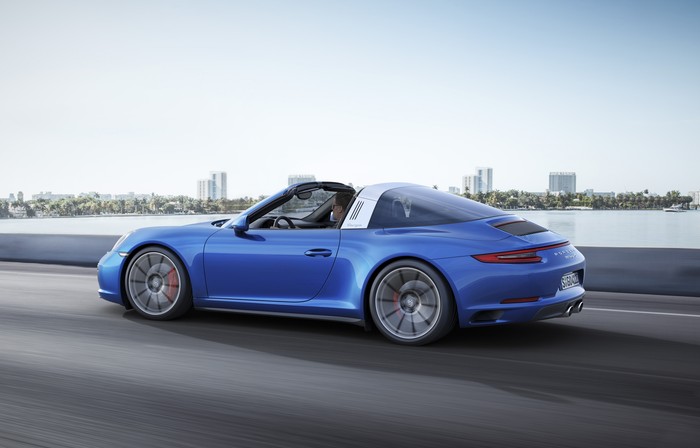
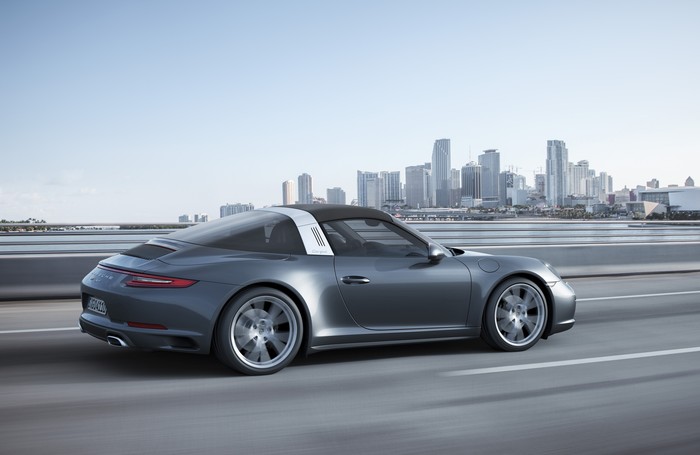
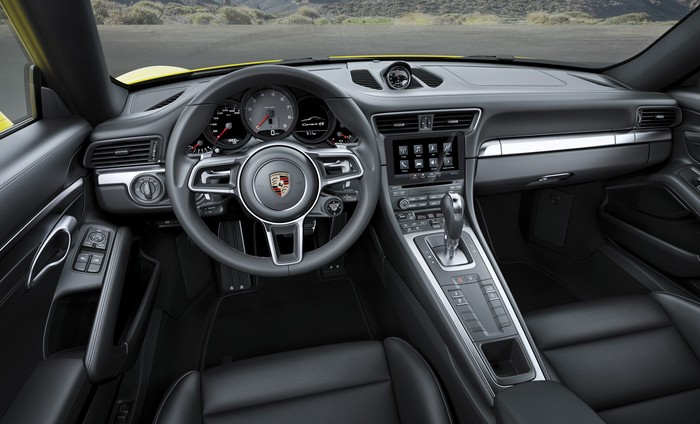
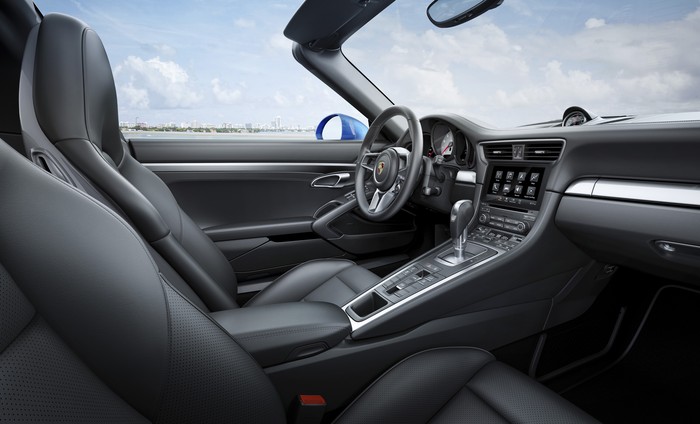
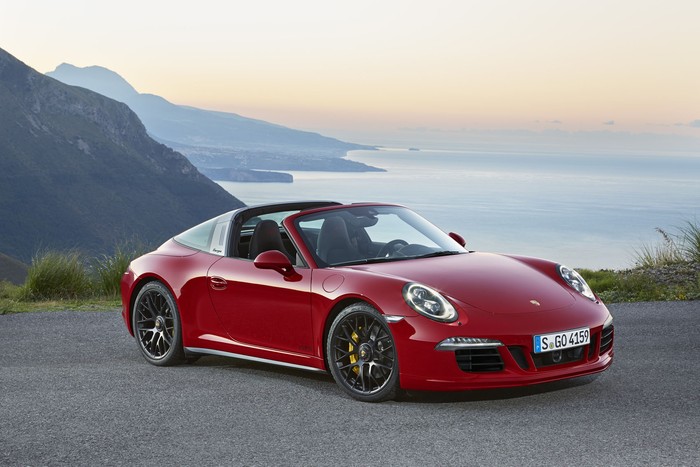
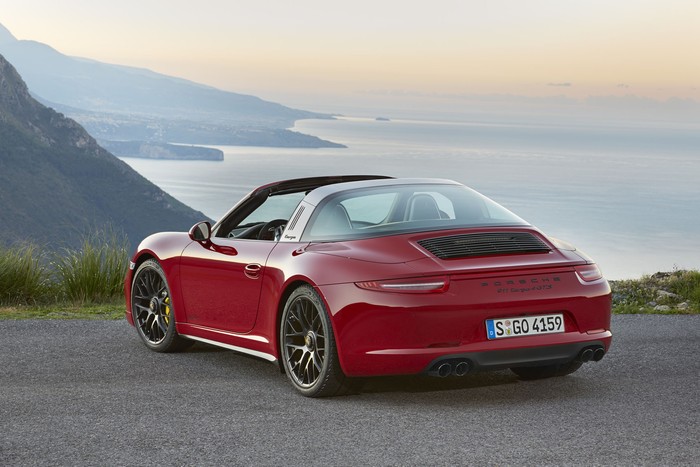
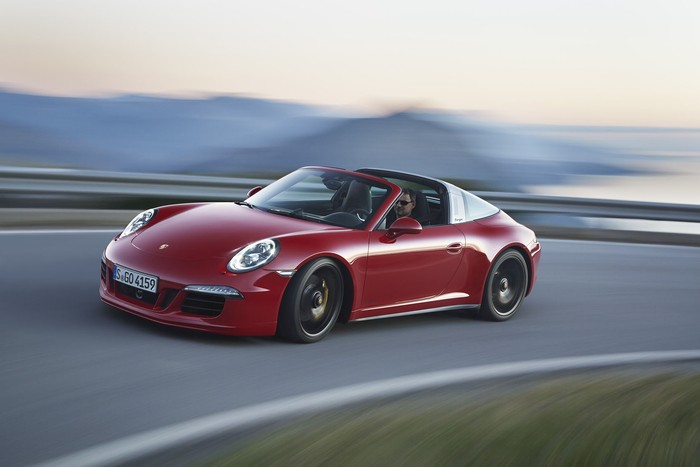
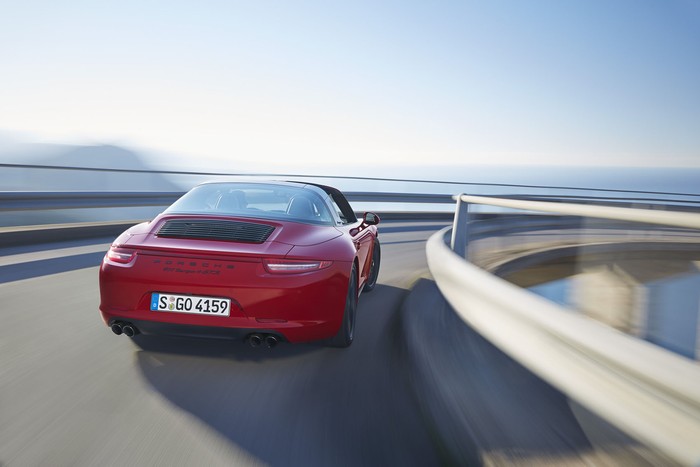
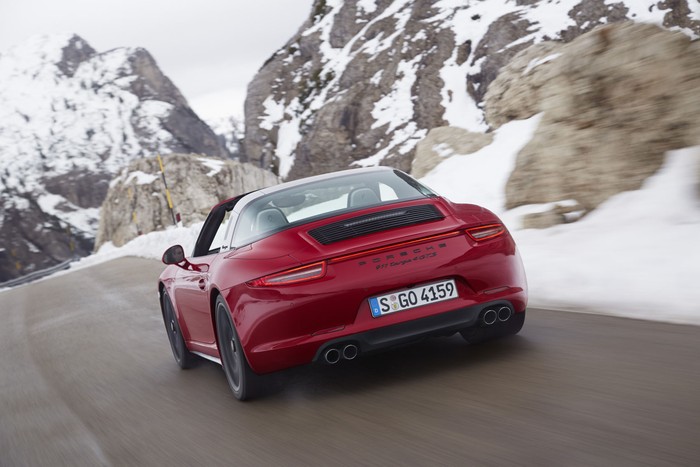
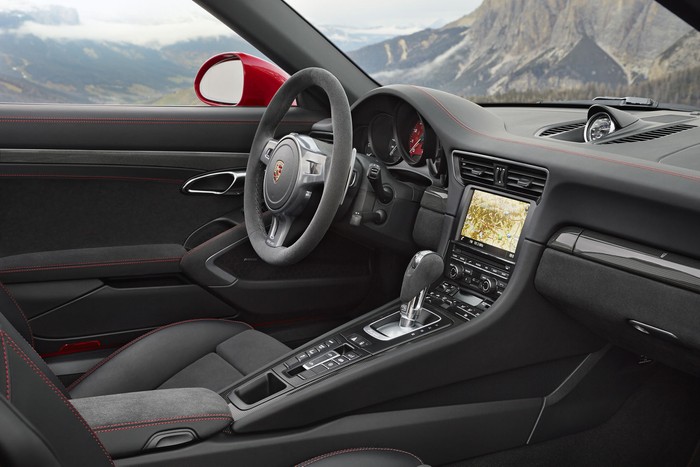
- Propulsion: Gas 3.6L Flat 6
- Power: 370hp
@
6500rpm - Torque: 331ft⋅lb
@
1700-5000rpm - Mileage: 22 MPG ( 19 city, 28 hwy)
- Transmission: 7-speed Manual
- Seating: 4 seats
in
2 rows - Passenger Volume: TBDcu ft
- Length: 177.1in
- Wheelbase: 96.5in
- Height: 50.7in
- Weight: 3461lbs
- Cargo Volume: 4.4cu ft
- Front Leg Room: TBDin
- Front Head Room: TBDin
- Front Hip Room: TBDin
- Rear Leg Room: TBDin
- Rear Head Room: TBDin
- Rear Hip Room: TBDin
- Drag Coefficient: TBD
- Drag Coefficient: 0.30